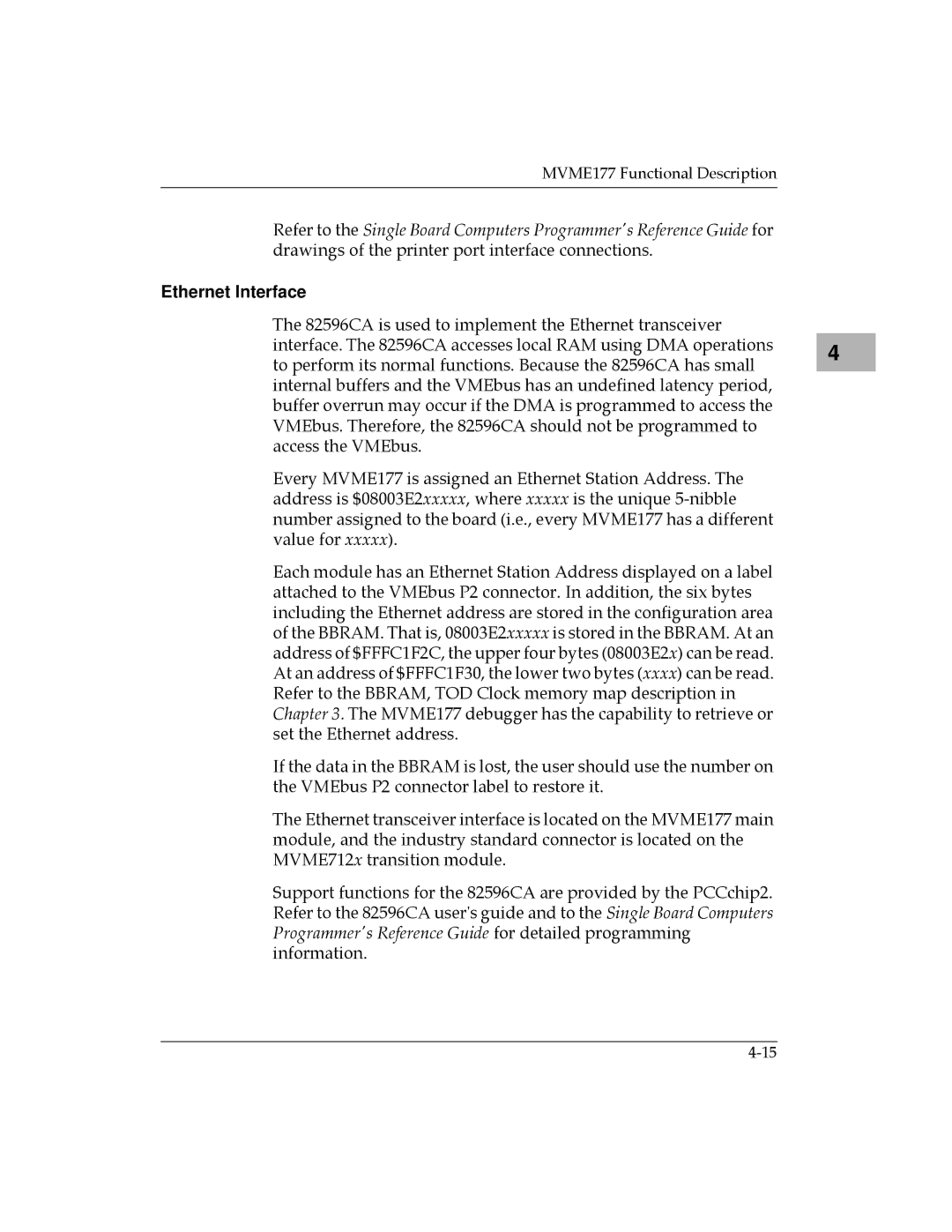
MVME177 Functional Description
Refer to the Single Board Computers Programmer's Reference Guide for drawings of the printer port interface connections.
Ethernet Interface
The 82596CA is used to implement the Ethernet transceiver interface. The 82596CA accesses local RAM using DMA operations to perform its normal functions. Because the 82596CA has small internal buffers and the VMEbus has an undefined latency period, buffer overrun may occur if the DMA is programmed to access the VMEbus. Therefore, the 82596CA should not be programmed to access the VMEbus.
Every MVME177 is assigned an Ethernet Station Address. The address is $08003E2xxxxx, where xxxxx is the unique
Each module has an Ethernet Station Address displayed on a label attached to the VMEbus P2 connector. In addition, the six bytes including the Ethernet address are stored in the configuration area of the BBRAM. That is, 08003E2xxxxx is stored in the BBRAM. At an address of $FFFC1F2C, the upper four bytes (08003E2x) can be read. At an address of $FFFC1F30, the lower two bytes (xxxx) can be read. Refer to the BBRAM, TOD Clock memory map description in Chapter 3. The MVME177 debugger has the capability to retrieve or set the Ethernet address.
If the data in the BBRAM is lost, the user should use the number on the VMEbus P2 connector label to restore it.
The Ethernet transceiver interface is located on the MVME177 main module, and the industry standard connector is located on the MVME712x transition module.
Support functions for the 82596CA are provided by the PCCchip2. Refer to the 82596CA user's guide and to the Single Board Computers Programmer's Reference Guide for detailed programming information.
4 |
